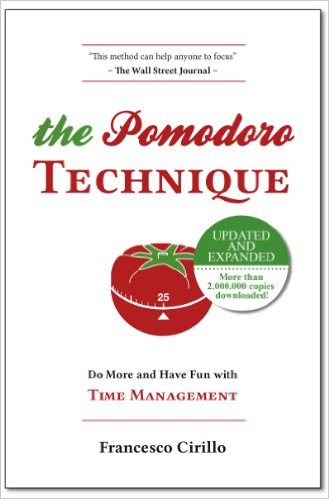
Can a Tomato improve your time management?
Way back in the late-1970s, while preparing for my Matriculation Board Exams in Jakarta, my Class Teacher taught me a study technique that helped me combat the overwhelm of revising for my first major exams.
It was a good technique since I topped the Board Exams. There were no tomatoes involved but it was similar to the Pomodoro Technique developed by Francesco Cirillo in the late 1980s.
Creativity has no age limits and I understand that Cirillo first used this technique when he was a university student.
His technique involved using a timer and breaking down work into intervals that were 25 minutes in length with short breaks in between.
Cirillo named the intervals “pomodori” after the tomato-shaped kitchen timer that he used. Pomodoro is the Italian word for Tomato.

From a learning perspective, the idea of taking frequent breaks to improve mental agility is similar to Distributed Practice Learning. That’s the method that my teacher taught me.
Distributed Learning Practice when you need to improve performance skills
In Distributed Practice Learning, the principle of work and rest is followed. The learner is not required to memorize the assigned material in one continuous time period. The learner is allowed intervals of rest.
Distributed practice is likely to be a superior method for performance skills like driving or typewriting. It is often though not always advantageous when verbal material is being memorized such as poetry or chemical formulas.
Shorter study periods are beneficial for young students, slow learners and particularly when motivation level is low or the material is complex and difficult to understand. It also helps to maintain attention, break monotony and reduce fatigue.
How to implement Pomodoro Technique in 5 Easy Steps
There are 5 simple steps to implement this technique:
Step 1: Plan the tasks to be done using a “To Do List” and then prioritize them. At this stage, make a realistic estimate of the time required for each task and note them down against the task. Decide on the task to be done.
Step 2: Set your timer to ‘n’ minutes (traditionally 25 minutes). This time interval is your ‘pomodori’
Step 3: Work on the task until your timer rings. Record your progress with an X , tick mark or even use a highlighter if colours motivate you.
Step 4: Take a short break of 3 to 5 minutes.
Step 5: Go back and repeat Steps 1 to 4.
When you have completed 4 “pomodori”, take a longer break of 15 to 30 minutes.
The beauty of this technique is that every time you complete a “pomodori” and record it, you experience a sense of satisfaction that you have achieved something.
It enables you to get information on where you can improve your time management and how realistic you are about task times.
What happens if you are interrupted in the middle of a pomodoro?
Well, the bad news is that a pomodoro is not divisible. In other words, you cannot do a task for 5 minutes and then come back to resume it.
If you are interrupted during the task, then either you have to record that activity or abandon the pomodoro and move on.
In time, you will see how interruptions impact your time management. If necessary, you will learn how to keep distracters at bay.
Downloadable “Pomodoro Technique” software is available on the internet. I personally prefer the traditional method of using a timer, a paper and a pencil or pen.
I actually maintain a beautiful folder where all my To Do List tasks are recorded on a daily basis.
Somehow, just writing down the tasks and time required gets me motivated. The sound of the timer and the tick mark on my sheet makes me eager to get onto the next pomodoro.
What about you? Have you tried this technique? Share your thoughts with me in the comments box below.
The Pomodoro Technique is a good Time Management Tool. It works best when we know how to combat our time mismanagement and change our habits.
Learn more about Karmic Ally Coaching’s online course 5 Simple Steps to Win your Time Management Challenge here or by clicking the image below.
Written By: Vatsala Shukla




 I adhere to the Certified Coaches Alliance Code of Ethics and Standards. A copy is available on request.
I adhere to the Certified Coaches Alliance Code of Ethics and Standards. A copy is available on request.
 Let's Talk through the Connect Form:
Let's Talk through the Connect Form: